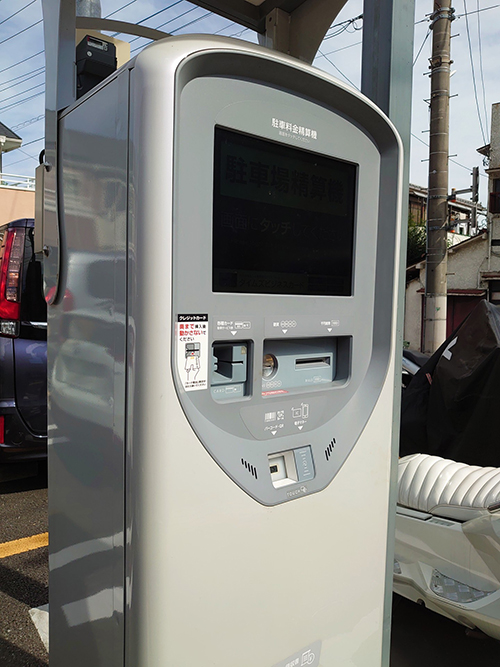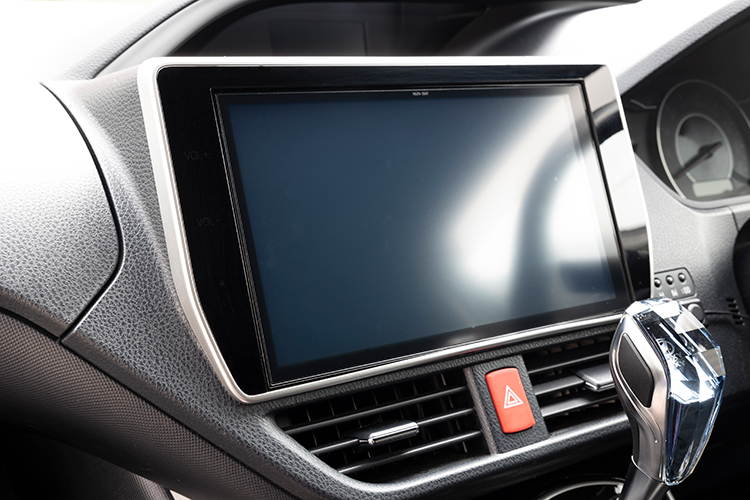Occasions to operate touch panels outdoors are increasing. It is impressive how convenient the world has become, with things like gas stations, paid parking lots, rental bicycles, and EV chargers. Although not used by the general public, touch panels are also used in agricultural machinery such as combines and tractors, construction machinery such as power shovels and cranes, and surveying equipment.

Touch panels used outdoors often have a UV-cut film applied to their surfaces to prevent deterioration caused by ultraviolet rays. Therefore, we assume that sufficient UV resistance measures have been implemented.
However, there appear to be problems caused by the infrared rays (heat) contained in sunlight.
One of our customers inquired about whether artificial solar lighting could be used to investigate what causes the blackening that occurs when touch panels are exposed to sunlight.
At the time of the initial inquiry, we did not know whether the blackening was caused by heat or ultraviolet rays. We lent a demonstration machine to the customer, and they irradiated touch panels with both light containing infrared rays and light without infrared rays by changing the filters. They found that blackening appeared when infrared rays were present in the irradiated light.
There are three types of filters available for artificial solar lighting: the E type, which can output visible light and infrared light at levels equivalent to natural sunlight; the B type, which can output ultraviolet light and visible light at levels equivalent to natural sunlight; and the L type, which can output light from ultraviolet to infrared at levels equivalent to natural sunlight.
By combining each filter with the super spotlight type, the following irradiation tests can be performed:
· UV + Visible (XELIOS model: XG-500BFSS)
· Visible + Infrared (XELIOS model: XG-500EFSS)
· UV + Visible + Infrared (XELIOS model: XG-500LFSS)
This will give you a rough idea of whether ultraviolet or infrared rays have a stronger effect. In other words, if you have all three filters, you only need to own one main unit of the super spotlight type artificial solar lighting XG-500SS.
· Super spotlight lighting type artificial solar lighting page is here (https://en.seric.co.jp/products/superspot/)
Incidentally, the XG-500LFSS, which produces ultraviolet, visible, and infrared rays, is the newly released “Earth Solar Lighting.”
· Earth Solar Lighting page is here (https://en.seric.co.jp/products/earth/)
The super spotlight type can irradiate an area with a diameter of 10 cm at an intensity equivalent to direct sunlight. The unevenness of light (referred to as spatial unevenness) within the 10 cm diameter irradiation area is within ±5%, and because the difference between high and low light intensity within the irradiation area is small, highly accurate irradiation tests can be conducted.

In-vehicle LCD monitors may also become blackened.
As you can see in the photo above, direct sunlight during the daytime in summer does not directly hit touch panels such as car navigation systems installed on the center console of vehicles. Direct sunlight only hits them during the morning and evening hours. Therefore, since the sunlight during these times does not have the same irradiation intensity as around noon, we believe that ambient temperature conditions are also one of the causes of blackening. Since the back of the touch panel is hot, that may also be having an effect.
We are not experts in touch panels or flat panel displays, so we do not know specifically what measures should be taken. However, unless the cause of blackening is identified, it is not possible to take any countermeasures, so it was good that the artificial solar lighting was helpful in identifying the cause.
This time, we introduced a case study on the reproduction of blackening in touch panels. We can also recommend our artificial solar lighting as a means to investigate various other failures and determine whether they are caused by the heat of sunlight or by the effects of ultraviolet rays.
Super spotlight type artificial solar lighting introduction page:https://en.seric.co.jp/products/superspot/
Earth Solar Lighting Introduction Page:https://en.seric.co.jp/products/earth/